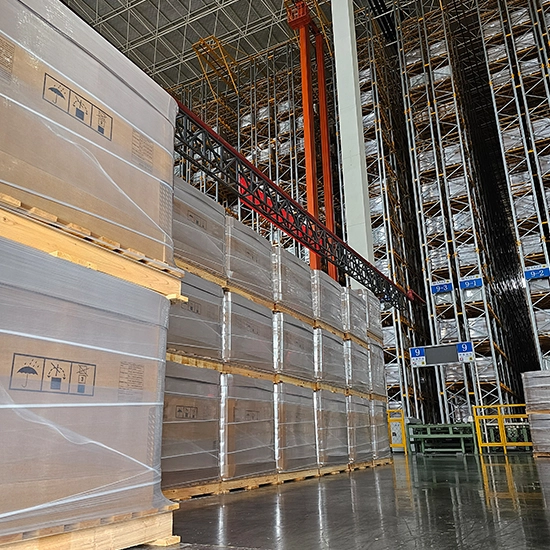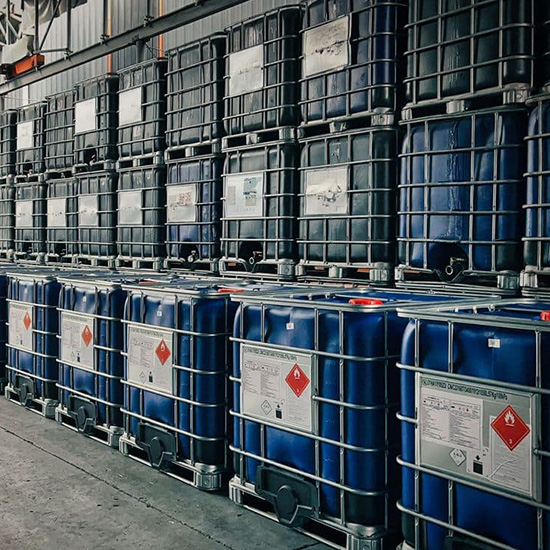China Jushi Co., Ltd.
Company Profile
China Jushi Co., Ltd. (“China Jushi”) is a core enterprise in the fiberglass business division of China National Building Material Company Limited (HK3323; “CNBM”), and specializes in the manufacture and sales of fiberglass and its finished articles as the main business. China Jushi is one of the largest enterprises in the new material industry of China and in 1999, it got listed on the Shanghai Stock Exchange (Stock name: China Jushi, Stock Code: 600176).
- For Pipes
- For Continuous Profiles
- For Thermoplastics
- For Compression Molding
- For Open Molding
- For Fabrics And Mats
- For Other Processes
Traditional Filament Winding
In the filament winding process, continuous strands of resin-impregnated glass fiber are wound under tension onto a mandrel in precise geometric patterns to build up the part which is then cured to form the finished parts.
Continuous Filament Winding
Multiple laminate layers, composed of resin, reinforcement glass and other materials are applied to a rotating mandrel, which is formed from a continuous steel band continuously traveling in a cork-screw motion. The composite part is heated and cured in place as the mandrel travels through the line and then cut into a specific length with a traveling cut-off saw.
Pultrusion Process
The rovings, mats or other fabrics are pulled through a resin impregnation bath and then into a heated die using a continous pulling device. The final products are formed under high temperature and high pressure conditions.
Continuous Panel Molding Process
A resin mix is uniformly deposited in a controlled amount onto a moving film at aconstant speed. The thickness of the resin is controlled by the draw-knife. Fiberglass roving is chopped and uniformly distributed onto the resin. Then a top film is applied forming a sandwich structure. The wet assembly travels through a curing oven to form the composite panel.
Extrusion and Injection Processes
The reinforcements (glass fiber roving or chopped strands) and thermoplastic resin are mixed in an extruder. After cooling, they are chopped into reinforced thermoplastic pellets. The pellets are fed into an injection molding machine to form finished parts.
LFT Process
LFT-D
Polymer pellets and glass roving are all introduced into a twin-screw extruder where the polymer is melted and compound is formed. Then the molten compound is directly molded into the final parts by injection or compression molding process.
LFT-G
The thermoplastic polymer is heated to a molten phase and pumped into the die-head. The continuous roving is pulled through a dispersion die to ensure the glass fiber and polymer impregrated fully and to get consolidated rods. After cooling, the rod is chopped into reinforced pellets.
SMC Process
Mix the resins,fillers and other materials well to form a resin paste, apply the paste on a first film,disperse chopped glass fibers evenly on the resin paste film and cover this paste film with another layer of resin paste film,and then compact the two paste films with pressure rollers of a SMC machine unit to form sheet molding compound products.
BMC Process
A bulk molding compound is made by combining glasschoppedstrands,resin,filler,catalystand other additives.This compound is processed by compression molding or injection molding to form the finished composite parts.
Spray-up Process
A mould is sprayed with a mixture of catalyzed resin and chopped fiberglass roving (fiberglass cut to specific length using a chopper gun). Then the glass-resin mixture is well compacted, usually manually,for complete impregnation and deairing.After curing the finished composite part is de-molded.
Hand Lay-up Process
The reinforcement, in form of fiberglass strands, mat or woven roving, is first laid into a mold which has been coated with a release agent and a gel coat. Then a resin mix is applied by hand using a brush or spray gun. A roller is then used to ensure uniform impregnation, complete glass wet-out, and removal of any trapped air bubbles. This operation is repeated until the desired thickness of the structure is obtained. After curing at room temperature or under heating conditions, the finished parts are formed.
Weaving Process
Woven fabrics are made on looms with warp or weft reinforcement threads interlaced with each other in varying configurations to give different fabric styles.
Mat Production Process
Assembled rovings are chopped to a specified length,and then fall onto a conveyor randomly. The chopped strands are bonded together by either an emulsion binder or a powder binder. After drying, cooling and winding, a chopped stand mat is formed.
Texturizing Process
The roving is fed into the texturizing machine (air jet), where the surface fibers are randomly broken by compressed air, giving it a bulkier look. Subsequently, the texturized roving is wound onto a bobbin.
Automotive Headliner Molding Process
PU foam sheets, fiberglass or chopped strand mats, and non-woven polyester fabrics are bound together by a binder and laminated to create automotive headliners.


OFFERINGS
FIBERGLASS PRODUCTS
FOLLOW US

RESOURCES
TF FRP
Email: info@tffrp.com